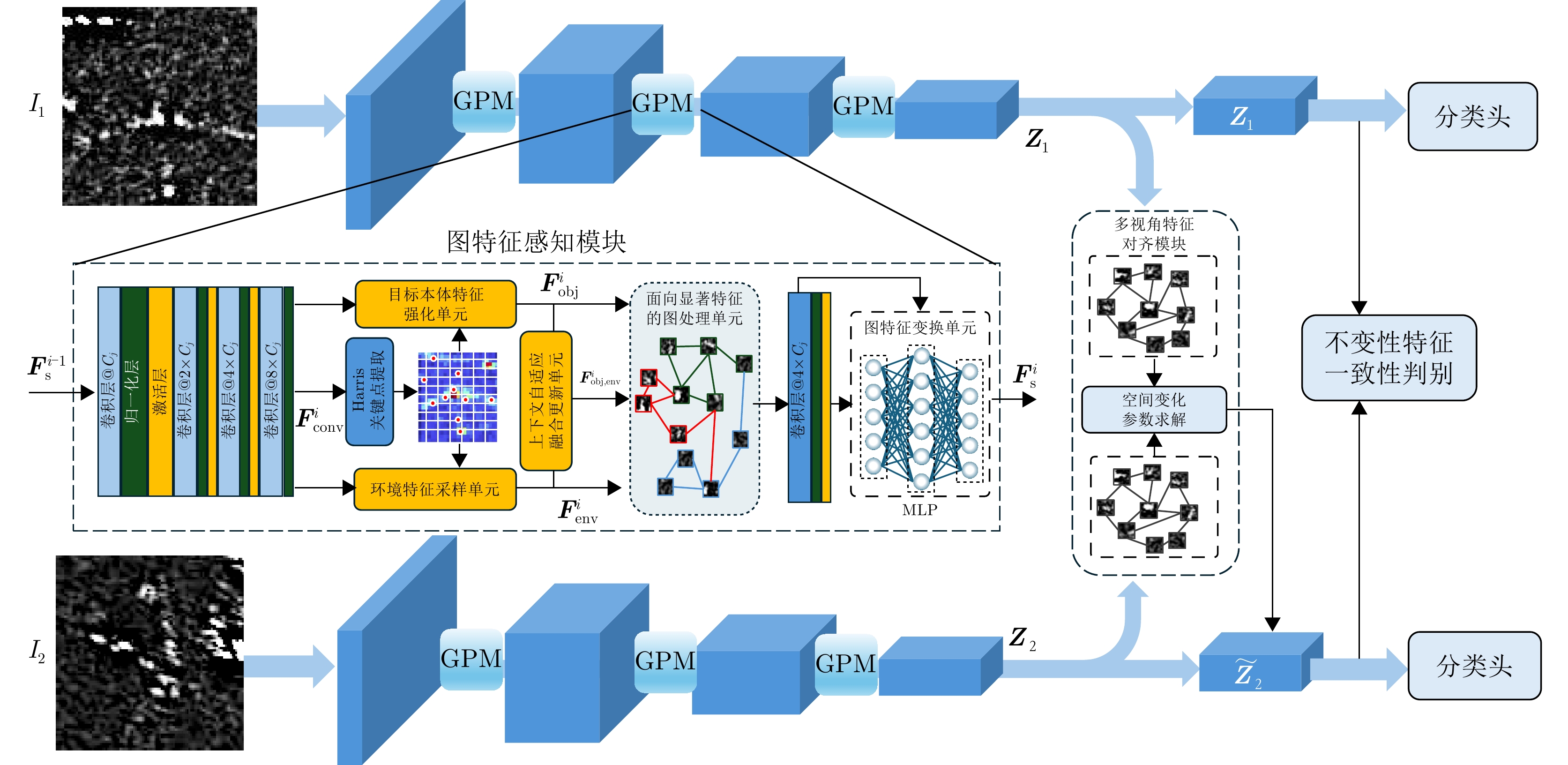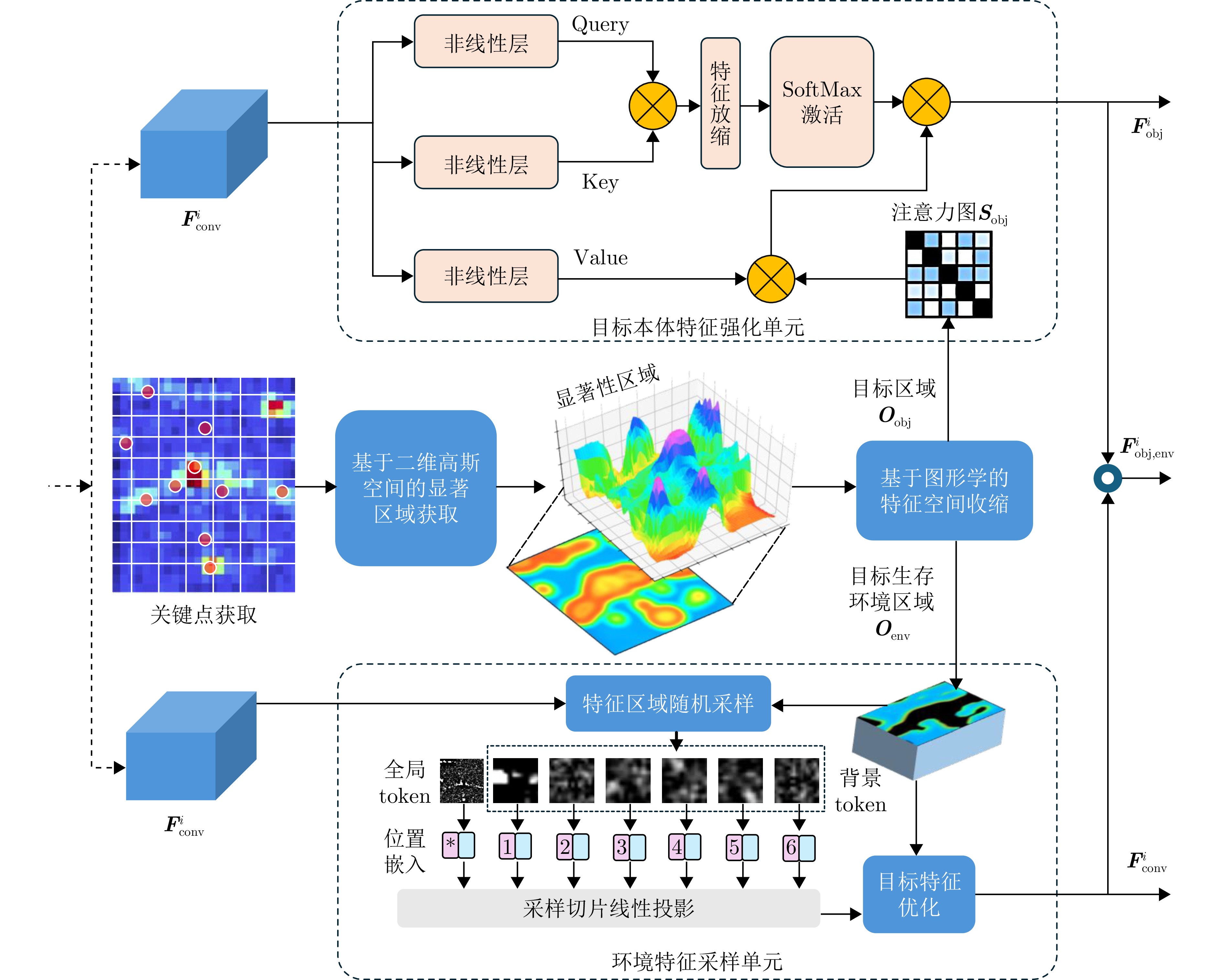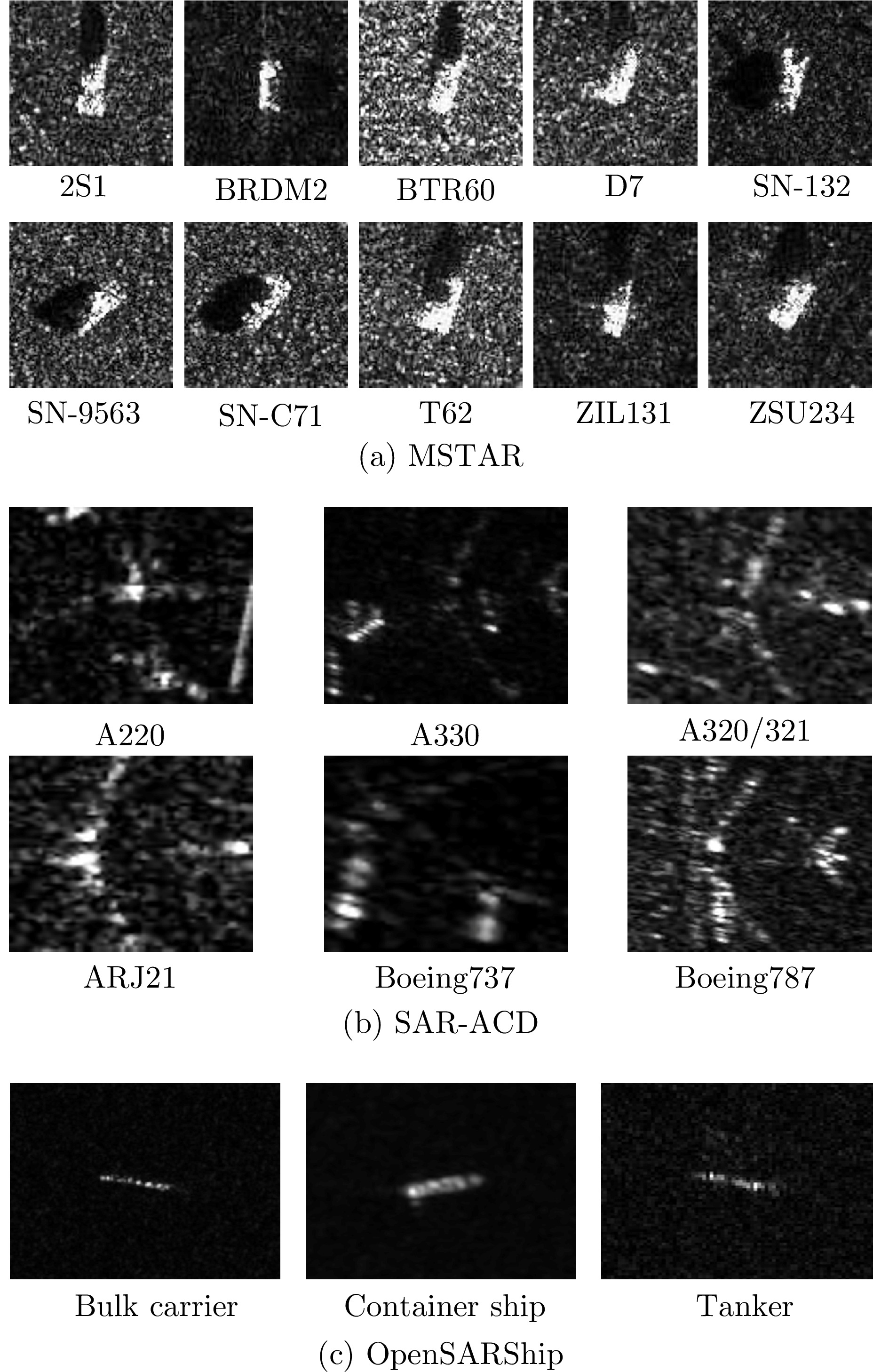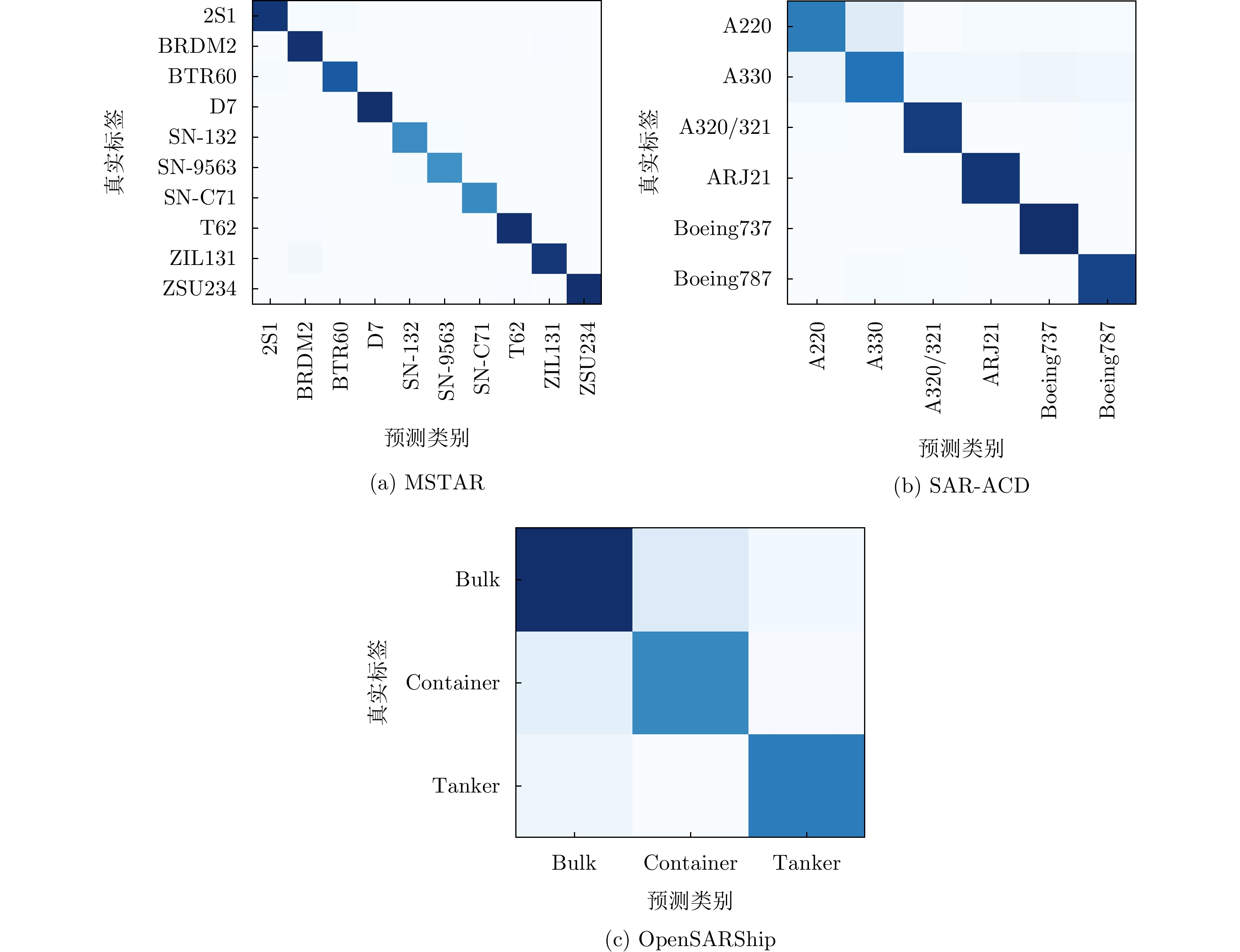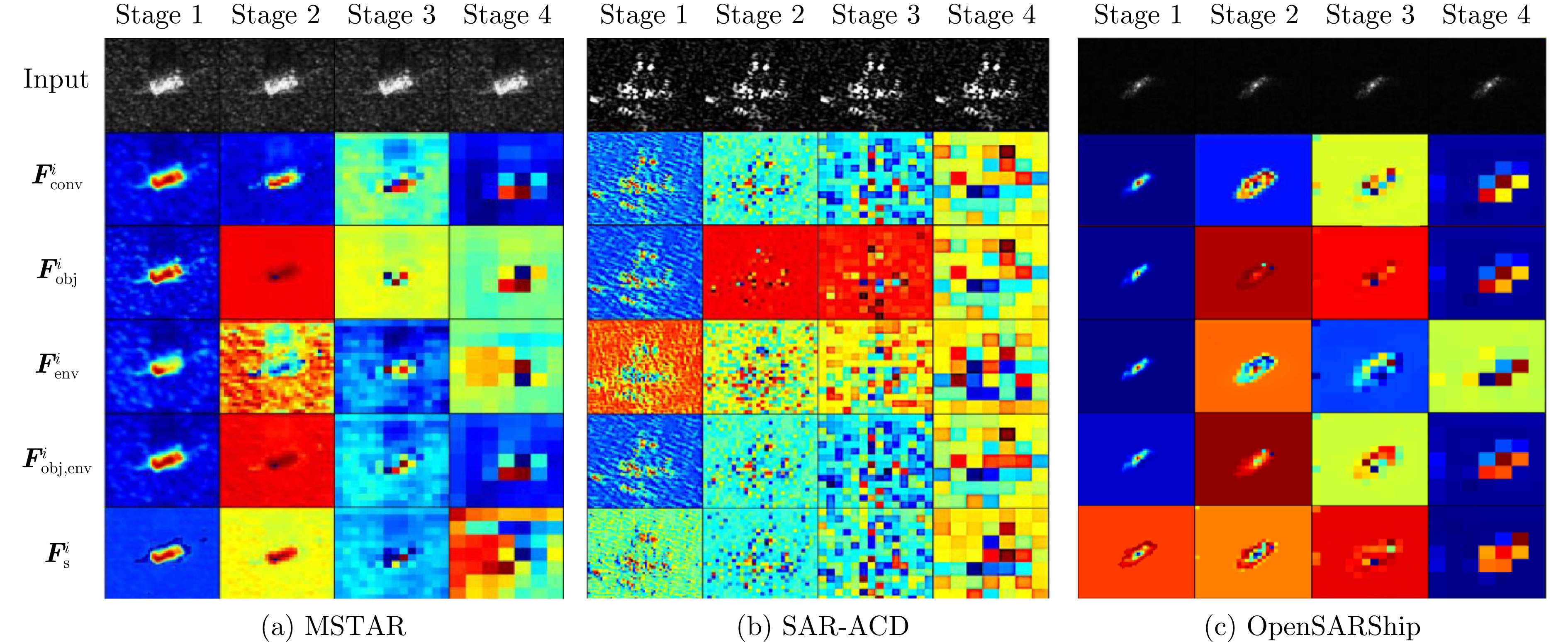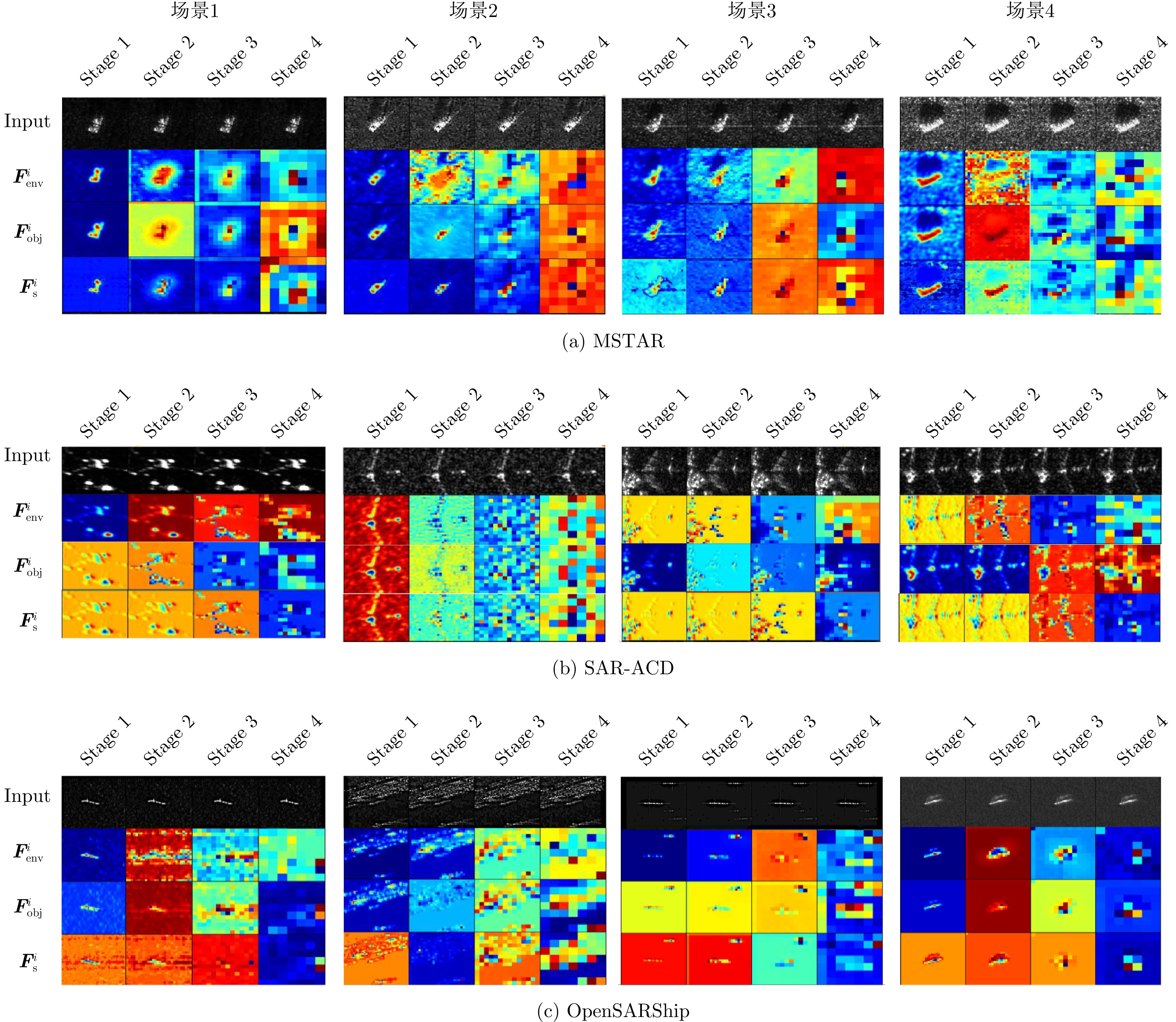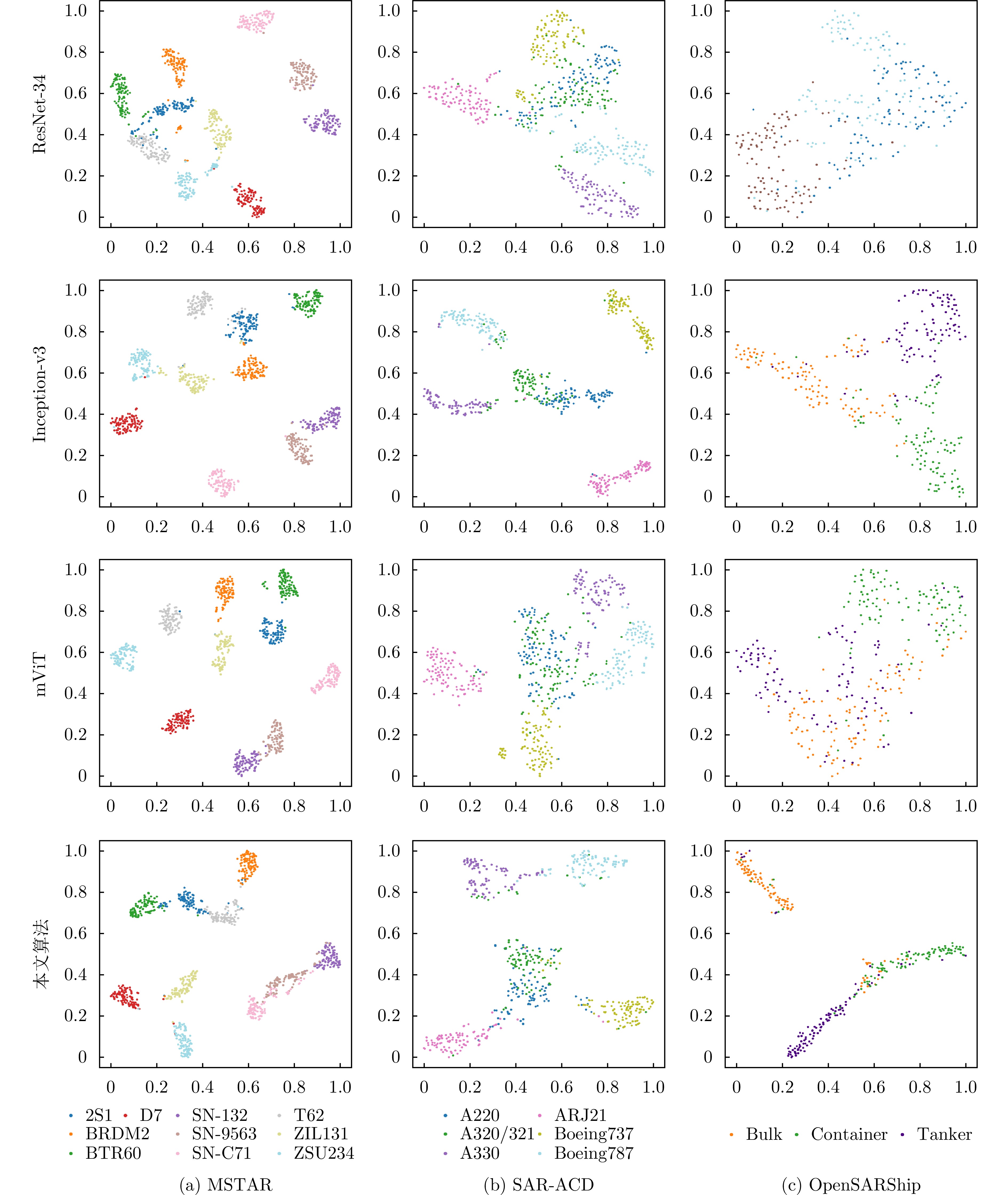| [1] |
YU P, QIN Kai, and CLAUSI D A. Unsupervised polarimetric SAR image segmentation and classification using region growing with edge penalty[J]. IEEE Transactions on Geoscience and Remote Sensing, 2012, 50(4): 1302–1317. doi: 10.1109/TGRS.2011.2164085. |
| [2] |
SHANG Ronghua, LIU Mengmeng, JIAO Licheng, et al. Region-level SAR image segmentation based on edge feature and label assistance[J]. IEEE Transactions on Geoscience and Remote Sensing, 2022, 60: 5237216. doi: 10.1109/TGRS.2022.3217053. |
| [3] |
GAO Gui. Statistical modeling of SAR images: A survey[J]. Sensors, 2010, 10(1): 775–795. doi: 10.3390/s100100775. |
| [4] |
QIN Xianxiang, ZOU Huanxin, ZHOU Shilin, et al. Region-based classification of SAR images using kullback-leibler distance between generalized gamma distributions[J]. IEEE Geoscience and Remote Sensing Letters, 2015, 12(8): 1655–1659. doi: 10.1109/LGRS.2015.2418217. |
| [5] |
LOPES A, LAUR H, and NEZRY E. Statistical distribution and texture in multilook and complex sar images[C]. The 10th Annual International Symposium on Geoscience and Remote Sensing, College Park, MD, USA, 1990: 2427–2430. doi: 10.1109/IGARSS.1990.689030. |
| [6] |
MENON M V. Estimation of the shape and scale parameters of the weibull distribution[J]. Technometrics, 1963, 5(2): 175–182. doi: 10.1080/00401706.1963.10490073. |
| [7] |
DU Peijun, SAMAT A, WASKE B, et al. Random forest and rotation forest for fully polarized SAR image classification using polarimetric and spatial features[J]. ISPRS Journal of Photogrammetry and Remote Sensing, 2015, 105: 38–53. doi: 10.1016/j.isprsjprs.2015.03.002. |
| [8] |
PARIKH H, PATEL S, and PATEL V. Classification of SAR and PolSAR images using deep learning: A review[J]. International Journal of Image and Data Fusion, 2020, 11(1): 1–32. doi: 10.1080/19479832.2019.1655489. |
| [9] |
张翼鹏, 卢东东, 仇晓兰, 等. 基于散射点拓扑和双分支卷积神经网络的SAR图像小样本舰船分类[J]. 雷达学报(中英文), 2024, 13(2): 411–427. doi: 10.12000/JR23172. ZHANG Yipeng, LU Dongdong, QIU Xiaolan, et al. Few-shot ship classification of SAR images via scattering point topology and dual-branch convolutional neural network[J]. Journal of Radars, 2024, 13(2): 411–427. doi: 10.12000/JR23172. |
| [10] |
LIU Fang, JIAO Licheng, HOU Biao, et al. POL-SAR image classification based on wishart DBN and local spatial information[J]. IEEE Transactions on Geoscience and Remote Sensing, 2016, 54(6): 3292–3308. doi: 10.1109/TGRS.2016.2514504. |
| [11] |
GENG Jie, FAN Jianchao, WANG Hongyu, et al. High-resolution SAR image classification via deep convolutional autoencoders[J]. IEEE Geoscience and Remote Sensing Letters, 2015, 12(11): 2351–2355. doi: 10.1109/LGRS.2015.2478256. |
| [12] |
ZHU Yimin, YUAN Kexin, ZHONG Wenlong, et al. Spatial-spectral ConvNeXt for hyperspectral image classification[J]. IEEE Journal of Selected Topics in Applied Earth Observations and Remote Sensing, 2023, 16: 5453–5463. doi: 10.1109/JSTARS.2023.3282975. |
| [13] |
DAS A and CHANDRAN S. Transfer learning with Res2Net for remote sensing scene classification[C]. 2021 11th International Conference on Cloud Computing, Data Science & Engineering (Confluence), Noida, India, 2021: 796–801. doi: 10.1109/Confluence51648.2021.9377148. |
| [14] |
NIU Chaoyang, GAO Ouyang, LU Wanjie, et al. Reg-SA-UNet++: A lightweight landslide detection network based on single-temporal images captured postlandslide[J]. IEEE Journal of Selected Topics in Applied Earth Observations and Remote Sensing, 2022, 15: 9746–9759. doi: 10.1109/JSTARS.2022.3219897. |
| [15] |
SIVASUBRAMANIAN A, VR P, HARI T, et al. Transformer-based convolutional neural network approach for remote sensing natural scene classification[J]. Remote Sensing Applications: Society and Environment, 2024, 33: 101126. doi: 10.1016/j.rsase.2023.101126. |
| [16] |
WANG Haitao, CHEN Jie, HUANG Zhixiang, et al. FPT: Fine-grained detection of driver distraction based on the feature pyramid vision transformer[J]. IEEE Transactions on Intelligent Transportation Systems, 2022, 24(2): 1594–1608. doi: 10.1109/TITS.2022.3219676. |
| [17] |
DAI Yuqi, ZHENG Tie, XUE Changbin, et al. SegMarsViT: Lightweight mars terrain segmentation network for autonomous driving in planetary exploration[J]. Remote Sensing, 2022, 14(24): 6297. doi: 10.3390/rs14246297. |
| [18] |
CHEN Yihan, GU Xingyu, LIU Zhen, et al. A fast inference vision transformer for automatic pavement image classification and its visual interpretation method[J]. Remote Sensing, 2022, 14(8): 1877. doi: 10.3390/rs14081877. |
| [19] |
HUAN Hai and ZHANG Bo. FDAENet: Frequency domain attention encoder-decoder network for road extraction of remote sensing images[J]. Journal of Applied Remote Sensing, 2024, 18(2): 024510. doi: 10.1117/1.JRS.18.024510. |
| [20] |
ZHANG Si, TONG Hanghang, XU Jiejun, et al. Graph convolutional networks: A comprehensive review[J]. Computational Social Networks, 2019, 6(1): 11. doi: 10.1186/s40649-019-0069-y. |
| [21] |
HAMILTON W L, YING R, and LESKOVEC J. Inductive representation learning on large graphs[C]. The 31st International Conference on Neural Information Processing Systems, Long Beach, CA, USA, 2017: 1025–1035.
|
| [22] |
LIU Chuang, ZHAN Yibing, WU Jia, et al. Graph pooling for graph neural networks: Progress, challenges, and opportunities[C]. The Thirty-Second International Joint Conference on Artificial Intelligence, Macao, China, 2023: 6712–6722. doi: 10.24963/ijcai.2023/752. |
| [23] |
VELIČKOVIĆ P, CUCURULL G, CASANOVA A, et al. Graph attention networks[C]. The Sixth International Conference on Learning Representation, Vancouver, BC, Canada, 2018: 1–12.
|
| [24] |
OVEIS A H, GIUSTI E, GHIO S, et al. A survey on the applications of convolutional neural networks for synthetic aperture radar: Recent advances[J]. IEEE Aerospace and Electronic Systems Magazine, 2022, 37(5): 18–42. doi: 10.1109/MAES.2021.3117369. |
| [25] |
WANG Ru, NIE Yinju, and GENG Jie. Multiscale superpixel-guided weighted graph convolutional network for polarimetric SAR image classification[J]. IEEE Journal of Selected Topics in Applied Earth Observations and Remote Sensing, 2024, 17: 3727–3741. doi: 10.1109/JSTARS.2024.3355290. |
| [26] |
ZHANG Yawei, CAO Yu, FENG Xubin, et al. SAR object detection encounters deformed complex scenes and aliased scattered power distribution[J]. IEEE Journal of Selected Topics in Applied Earth Observations and Remote Sensing, 2022, 15: 4482–4495. doi: 10.1109/JSTARS.2022.3157749. |
| [27] |
WANG Siyuan, WANG Yinghua, LIU Hongwei, et al. A few-shot SAR target recognition method by unifying local classification with feature generation and calibration[J]. IEEE Transactions on Geoscience and Remote Sensing, 2024, 62: 5200319. doi: 10.1109/TGRS.2023.3337856. |
| [28] |
FENG Yunxiang, YOU Yanan, TIAN Jing, et al. OEGR-DETR: A novel detection transformer based on orientation enhancement and group relations for SAR object detection[J]. Remote Sensing, 2023, 16(1): 106. doi: 10.3390/rs16010106. |
| [29] |
吕艺璇, 王智睿, 王佩瑾, 等. 基于散射信息和元学习的SAR图像飞机目标识别[J]. 雷达学报, 2022, 11(4): 652–665. doi: 10.12000/JR22044. LYU Yixuan, WANG Zhirui, WANG Peijin, et al. Scattering information and meta-learning based SAR images interpretation for aircraft target recognition[J]. Journal of Radars, 2022, 11(4): 652–665. doi: 10.12000/JR22044. |
| [30] |
ZHANG Rui, WANG Ziqi, LI Yang, et al. Task-aware few-shot SAR image classification method based on multi-scale attention mechanism[J]. Computer Science, 2024, 51(8): 160–167. doi: 10.11896/jsjkx.230500171. |
| [31] |
SHI Baodai, ZHANG Qin, LI Yuhuan, et al. SAR image target recognition based on hybrid attention mechanism[J]. Electronics Optics & Control, 2023, 30(4): 45–49. doi: 10.3969/j.issn.1671-637X.2023.04.009. |
| [32] |
罗汝, 赵凌君, 何奇山, 等. SAR图像飞机目标智能检测识别技术研究进展与展望[J]. 雷达学报(中英文), 2024, 13(2): 307–330. doi: 10.12000/JR23056. LUO Ru, ZHAO Lingjun, HE Qishan, et al. Intelligent technology for aircraft detection and recognition through SAR imagery: Advancements and prospects[J]. Journal of Radars, 2024, 13(2): 307–330. doi: 10.12000/JR23056. |
| [33] |
KANG Yuzhuo, WANG Zhirui, ZUO Haoyu, et al. ST-Net: Scattering topology network for aircraft classification in high-resolution SAR images[J]. IEEE Transactions on Geoscience and Remote Sensing, 2023, 61: 5202117. doi: 10.1109/TGRS.2023.3236987. |
| [34] |
YI Yonghao, YOU Yanan, LI Chao, et al. EFM-Net: An essential feature mining network for target fine-grained classification in optical remote sensing images[J]. IEEE Transactions on Geoscience and Remote Sensing, 2023, 61: 5606416. doi: 10.1109/TGRS.2023.3265669. |
| [35] |
文贡坚, 马聪慧, 丁柏圆, 等. 基于部件级三维参数化电磁模型的SAR目标物理可解释识别方法[J]. 雷达学报, 2020, 9(4): 608–621. doi: 10.12000/JR20099. WEN Gongjian, MA Conghui, DING Baiyuan, et al. SAR target physics interpretable recognition method based on three dimensional parametric electromagnetic part model[J]. Journal of Radars, 2020, 9(4): 608–621. doi: 10.12000/JR20099. |
| [36] |
POTTER L C and MOSES R L. Attributed scattering centers for SAR ATR[J]. IEEE Transactions on Image Processing, 1997, 6(1): 79–91. doi: 10.1109/83.552098. |
| [37] |
DATCU M, HUANG Zhongling, ANGHEL A, et al. Explainable, physics-aware, trustworthy artificial intelligence: A paradigm shift for synthetic aperture radar[J]. IEEE Geoscience and Remote Sensing Magazine, 2023, 11(1): 8–25. doi: 10.1109/MGRS.2023.3237465. |
| [38] |
朱凯雯, 尤亚楠, 曹婧宜, 等. Hybrid-Gird: 遥感图像细粒度分类可解释方法[J]. 遥感学报, 2024, 28(7): 1722–1734. doi: 10.11834/jrs.20243252. ZHU Kaiwen, YOU Yanan, CAO Jingyi, et al. Hybrid-Gird: An explainable method for fine-grained classification of remote sensing images[J]. National Remote Sensing Bulletin, 2024, 28(7): 1722–1734. doi: 10.11834/jrs.20243252. |
| [39] |
DENG Huiqi, ZOU Na, DU Mengnan, et al. Unifying fourteen post-hoc attribution methods with taylor interactions[J]. IEEE Transactions on Pattern Analysis and Machine Intelligence, 2024, 46(7): 4625–4640. doi: 10.1109/TPAMI.2024.3358410. |
| [40] |
丁柏圆, 文贡坚, 余连生, 等. 属性散射中心匹配及其在SAR目标识别中的应用[J]. 雷达学报, 2017, 6(2): 157–166. doi: 10.12000/JR16104. DING Baiyuan, WEN Gongjian, YU Liansheng, et al. Matching of attributed scattering center and its application to synthetic aperture radar automatic target recognition[J]. Journal of Radars, 2017, 6(2): 157–166. doi: 10.12000/JR16104. |
| [41] |
黄钟泠, 姚西文, 韩军伟. 面向SAR图像解译的物理可解释深度学习技术进展与探讨[J]. 雷达学报, 2022, 11(1): 107–125. doi: 10.12000/JR21165. HUANG Zhongling, YAO Xiwen, and HAN Junwei. Progress and perspective on physically explainable deep learning for synthetic aperture radar image interpretation[J]. Journal of Radars, 2022, 11(1): 107–125. doi: 10.12000/JR21165. |
| [42] |
FENG Sijia, JI Kefeng, WANG Fulai, et al. Electromagnetic Scattering Feature (ESF) module embedded network based on ASC model for robust and interpretable SAR ATR[J]. IEEE Transactions on Geoscience and Remote Sensing, 2022, 60: 5235415. doi: 10.1109/TGRS.2022.3208333. |
| [43] |
ZHANG Chen, WANG Yinghua, LIU Hongwei, et al. VSFA: Visual and scattering topological feature fusion and alignment network for unsupervised domain adaptation in SAR target recognition[J]. IEEE Transactions on Geoscience and Remote Sensing, 2023, 61: 5216920. doi: 10.1109/TGRS.2023.3317828. |
| [44] |
WANG Ruiqiu, SU Tao, XU Dan, et al. MIGA-Net: Multi-view image information learning based on graph attention network for SAR target recognition[J]. IEEE Transactions on Circuits and Systems for Video Technology, 2024, 34(11): 10779–10792. doi: 10.1109/TCSVT.2024.3418979. |
| [45] |
JADERBERG M, SIMONYAN K, ZISSERMAN A, et al. Spatial transformer networks[C]. The 28th International Conference on Neural Information Processing Systems, Montreal, Canada, 2015: 2017–2025.
|
| [46] |
KEYDEL E R, LEE S W, and MOORE J T. MSTAR extended operating conditions: A tutorial[C]. The SPIE 2757, Algorithms for Synthetic Aperture Radar Imagery III, Orlando, FL, US, 1996: 228–242. doi: 10.1117/12.242059. |
| [47] |
SUN Xian, LV Yixuan, WANG Zhirui, et al. SCAN: Scattering characteristics analysis network for few-shot aircraft classification in high-resolution SAR images[J]. IEEE Transactions on Geoscience and Remote Sensing, 2022, 60: 5226517. doi: 10.1109/TGRS.2022.3166174. |
| [48] |
ZHAO Juanping, ZHANG Zenghui, YAO Wei, et al. OpenSARUrban: A sentinel-1 SAR image dataset for urban interpretation[J]. IEEE Journal of Selected Topics in Applied Earth Observations and Remote Sensing, 2020, 13: 187–203. doi: 10.1109/JSTARS.2019.2954850. |
| [49] |
ZHOU Xiaoqian, LUO Cai, REN Peng, et al. Multiscale complex-valued feature attention convolutional neural network for SAR automatic target recognition[J]. IEEE Journal of Selected Topics in Applied Earth Observations and Remote Sensing, 2024, 17: 2052–2066. doi: 10.1109/JSTARS.2023.3342986. |
| [50] |
JIANG Chunyun, ZHANG Huiqiang, ZHAN Ronghui, et al. Open-set recognition model for SAR target based on capsule network with the KLD[J]. Remote Sensing, 2024, 16(17): 3141. doi: 10.3390/rs16173141. |
| [51] |
ZHANG Tong, TONG Xiaobao, and WANG Yong. Semantics-assisted multiview fusion for SAR automatic target recognition[J]. IEEE Geoscience and Remote Sensing Letters, 2024, 21: 4007005. doi: 10.1109/LGRS.2024.3374375. |
| [52] |
SIMONYAN K and ZISSERMAN A. Very deep convolutional networks for large-scale image recognition[EB/OL]. https://arxiv.org/abs/1409.1556, 2015.
|
| [53] |
HE Kaiming, ZHANG Xiaohu, REN Shaoqing, et al. Deep residual learning for image recognition[C]. 2016 IEEE Conference on Computer Vision and Pattern Recognition (CVPR), Las Vegas, NV, USA, 2016: 770–778. doi: 10.1109/CVPR.2016.90. |
| [54] |
SZEGEDY C, VANHOUCKE V, IOFFE S, et al. Rethinking the inception architecture for computer vision[C]. 2016 IEEE Conference on Computer Vision and Pattern Recognition (CVPR), Las Vegas, NV, USA, 2016: 2818–2826. doi: 10.1109/CVPR.2016.308. |
| [55] |
LIU Ze, LIN Yutong, CAO Yue, et al. Swin transformer: Hierarchical vision transformer using shifted windows[C]. 2021 IEEE/CVF International Conference on Computer Vision, Montreal, QC, Canada, 2021: 9992–10002. doi: 10.1109/ICCV48922.2021.00986. |
| [56] |
李妙歌, 陈渤, 王东升, 等. 面向SAR图像目标分类的CNN模型可视化方法[J]. 雷达学报(中英文), 2024, 13(2): 359–373. doi: 10.12000/JR23107. LI Miaoge, CHEN Bo, WANG Dongsheng, et al. CNN model visualization method for SAR image target classification[J]. Journal of Radars, 2024, 13(2): 359–373. doi: 10.12000/JR23107. |
| [57] |
CHEN Hongkai, LUO Zixin, ZHANG Jiahui, et al. Learning to match features with seeded graph matching network[C]. 2021 IEEE/CVF International Conference on Computer Vision, Montreal, QC, Canada, 2021: 6281–6290. doi: 10.1109/ICCV48922.2021.00624. |
| [58] |
LOWE D G. Distinctive image features from scale-invariant keypoints[J]. International Journal of Computer Vision, 2004, 60(2): 91–110. doi: 10.1023/B:VISI.0000029664.99615.94. |
| [59] |
RADFORD A, KIM J W, HALLACY C, et al. Learning transferable visual models from natural language supervision[EB/OL]. https://arxiv.org/abs/2103.00020, 2021.
|




 Submit Manuscript
Submit Manuscript Peer Review
Peer Review Editor Work
Editor Work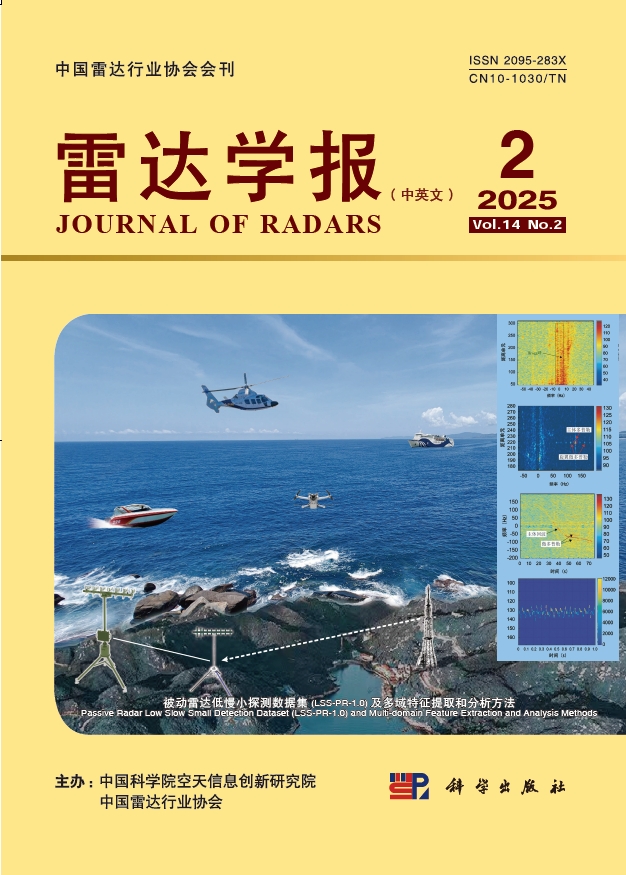

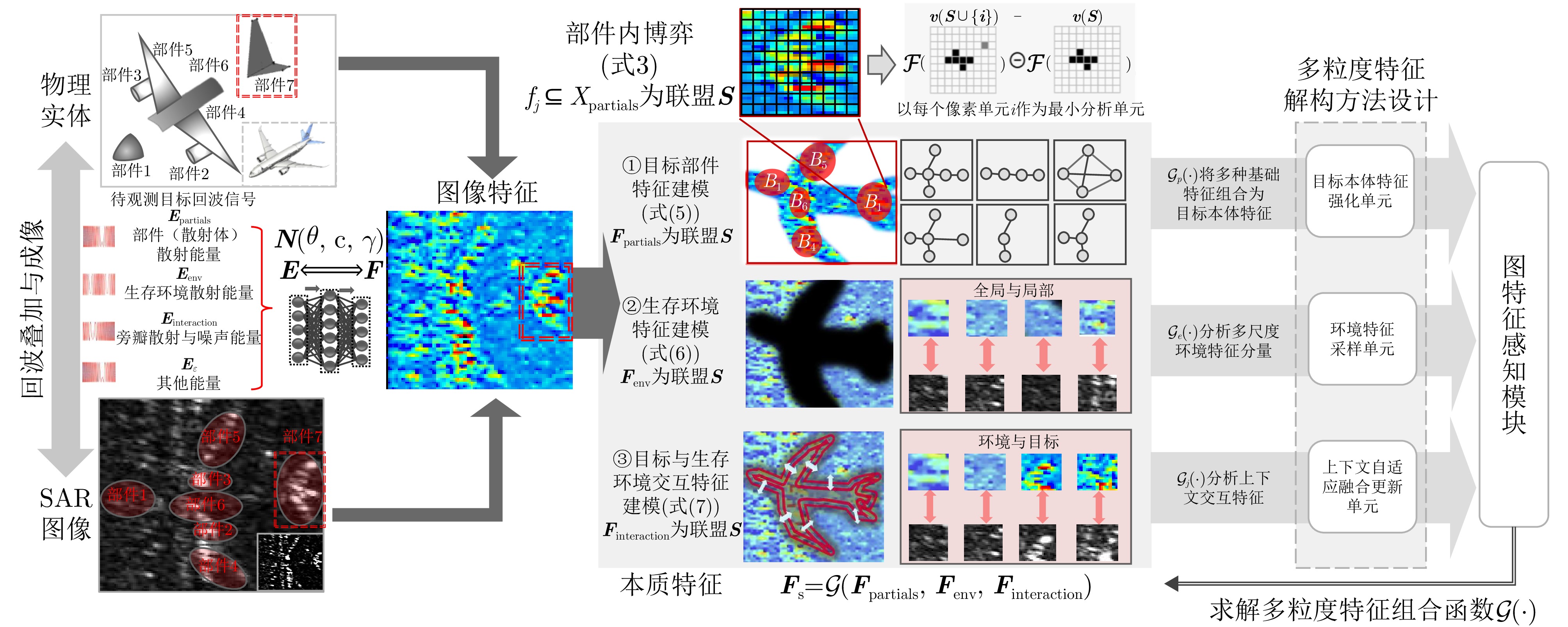



 DownLoad:
DownLoad:
